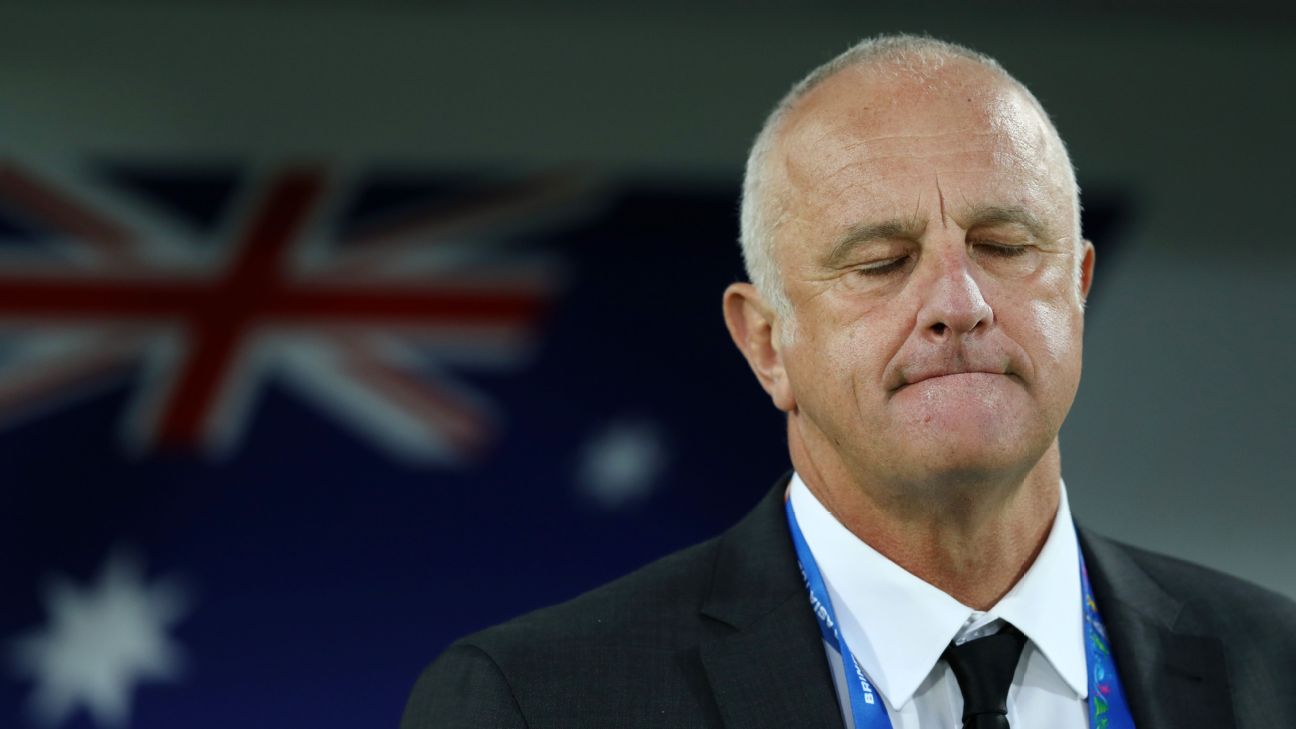


Like football, the essence of what makes a story great is its openness to human interpretation. With Australia to open their 2022 World Cup qualifying campaign against Kuwait on Tuesday, I have to make an admission. (Bear with me, here.)
2001: A Space Odyssey is my favourite film. Aside from the astounding visual experience, why Stanley Kubrick’s masterpiece has stood the test of time is that very aspect of interpretation.
Now, aside from Nietzsche’s theories on the Ubermensch, the existence of God and the question of humanity being a mere link in an evolutionary chain, qualification for the World Cup is always difficult. In context of Australian football’s future, though, there’s a comparison I cannot escape. This cycle is more like Dave Bowman going through the stargate, than the oft-described tricky road to qualification that has to be navigated.
Availabilities, form, injuries, suspensions, tactical balance, results — footballing aspects Graham Arnold and his side will have to deal with — simply contribute to a wider existential discussion this qualification phase represents, with respect to the Australian game.
– Ryan and Mooy can be the new Kewell and Viduka
– Mabil ready to take Socceroos career to ‘next stage’
Admittedly, it’s not something new. Football Federation Australia’s business model has long operated on the basis of qualification for the World Cup. With an independent A-League and a lesser share in consequent revenue from television rights, however, the exposure is now even greater.
Although we won’t discover the Star Child, the next two years for the Socceroos are critical for the future of the Australian game.
Regardless of end result, we as an Australian footballing public will be led to ask questions about ourselves, how we interpret football and how that manifests both on and off the pitch.
What feeds into this is Arnold’s own interpretation of the Socceroos’ Asian Cup exit in January. Essentially, what was learnt? Following the squad announcement over a week ago, the 56-year-old was buoyant, despite the causes and effects of that exit.
“We’ve shown in the past, since I’ve been in charge, we’ve dominated every game,” he said. “I got an independent review of the performances that I will show the players, that shows that we’ve dictated every game in terms of possession, shots, final third entries and it’s just about being ruthless and using that individual quality.”
It was an expansion on what he said earlier in August.
“We’ve dominated so many games since I’ve been in charge and it’s time we finished teams off. Every time we’ve played Asian opposition, we’ve created a lot of chances and not scored,” he said.
“Obviously, playing against packed defences that defend very deep, coming up with some great combination play and having more of our front players fit now is important.”
Possession and collective field position — something the Socceroos had with both Arnold and his predecessor Ange Postecoglou in Asian competition — does not necessarily indicate dominance, though. The key to dominance through the generation of openings is qualitative, as opposed to quantitative.
Speaking of Postecoglou, another interesting element of this qualification phase is Arnold’s character. The consequences that led to the former’s exit were more of a slow burn, with the relief performances at the 2014 World Cup and winning the 2015 Asian Cup provided.
Despite ideological differences, Arnold displays a similarly distinct prickliness when his strategic decisions and system — underpinned by the all-important element of authority — are placed under examination. The meek nature of January’s exit in the Asian Cup has not exactly given the same amount of oxygen to Arnold that Postecoglou enjoyed at the start of his World Cup qualification cycle.
Granted, there is the question of individual quality and the consequent impact on accepting risk in situational terms — something FFA technical director Rob Sherman said was in a state of crisis earlier this year. Looking at which Socceroos could make an impact over the course of this cycle, Tom Rogic, Daniel Arzani, Jacob Italiano, Awer Mabil, Chris Ikonomidis and Ajdin Hrustic are all possibilities and relatively capable in taking on defenders.
Although it might not be entirely prevalent in this second phase of AFC qualification, though, would one-on-one ability eliminate or only slightly alleviate the burden of earlier possession phases in Arnold’s system?
It is a question we’ll be eventually closer to answering with Aaron Mooy‘s return to the Socceroos setup, after missing the Asian Cup through injury, considering Massimo Luongo‘s marginal deployment to this point. Although it may have seemed of minor importance in isolation, the difference in scope afforded to Brandon O’Neill and Terry Antonis for the Socceroos’ 1-0 friendly loss against South Korea in June was significant, when placed in relation to that point.
Everyone in Australian football should desire success, and nothing but the best. Yet given the reality of how opposition teams approach the Socceroos in Asian competition, and Arnold’s difficulty in adapting to that at both club and international level, there is little evidence to suggest much will change.
In the Socceroos coach’s own words, the national team is the “true reflection of where we are at, because we can’t bring foreigners in to strengthen our teams.”
With regards to character, strategy and personnel, in context of what this qualification phase means for the Australian game as a whole, the ultimate question is how does Arnold respond when pressure is applied?
This then extends to the level of faith the FFA displays in him, especially given the financial implications of qualification and the terms of his own contract.
Will he be supported, or will he be left floating in space, with the oxygen cord severed?
